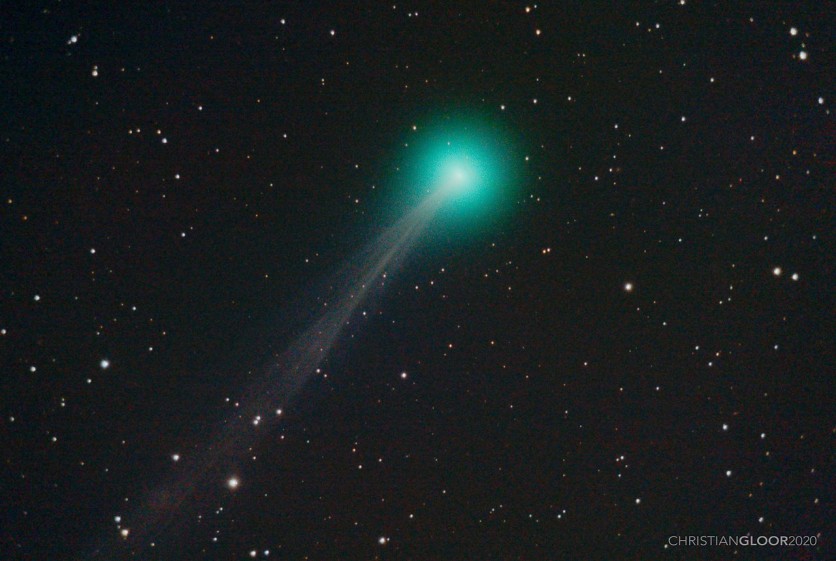Comet SWAN, or C/2020 F8, has already passed by us, but as it approaches the Sun for its orbit, astronomers believe that it will grow brighter--so bright that it will be visible to the naked eye if you look up at night.

But when is it best to see the "Comet of the Year," as Forbes calls it?
When will Comet SWAN be Visible?
The comet will be visible from the northern hemisphere, low in the northeast, an hour before the Sun rises, but it will be best to see it at its brightest on Monday morning, May 18.
Nevertheless, there will be chances that the skies won't be clear, but don't fret.
According to the news outlet, the next few mornings next week will also provide a decent view of the fast-moving comet until it moves away from our Sun and fizzles out, but it won't be as bright as it was on Monday morning.
As of writing, astronomers still believe that this week is the best time to see Comet SWAN in the sky.
The Wheres and Whens of Comet SWAN
Here's how, when, and where astronomy lovers can better witness this bright fireball in the next days:
- Monday morning, May 18, at pre-dawn: Comet SWAN is in the constellation of Perseus, which is likely to be at its brightest all week and will be visible low in the northeast nautical dawn is beginning.
- For the rest of the week, Comet SWAN will be closer to the Sun and will be sinking into the Sun's glare, which will make it harder to see.
- Wednesday, May 20, at pre-dawn: The comet will be seen very near the star Algol in Perseus' constellation.
- Tuesday, May 26: It will reach perihelion or the closest it can get to the Sun and will disappear in its glare. Viewing will then swap from pre-dawn morning to post-sunset evening sky.
How to Prepare for It
Then again, it's best to wake up early on Monday morning, an hour or two before dawn starts so you can prepare yourself.
Here are the sample times of nautical dawn in several places:
- New York City - 4:25 to 5:04 a.m.
- Miami - 5:38 to 6:08 a.m.
- Los Angeles - 4:47 to 5:21 a.m.
- London, UK - 3:23 to 4:21 a.m.
Nevertheless, nautical dawn might be different where you are, so it's best to know what time it will be on Monday morning and set the alarm an hour before.
You might also want to get this downloadable and printable sky chart that Sky & Telescope magazine offers.
Experts recommend setting up the night before the comet appears and identifying where you can easily see the northeast horizon and the constellation of Perseus.
Since lockdowns and quarantines are still ongoing in several places due to the novel coronavirus pandemic, it's best to stay close to homes, such as in your front or backyard or if you can, your roof.
Leave some binoculars or have them near you when you wake up, and most of all, avoid looking at your phone as its glare could ruin your night sky vision.
ⓒ 2025 TECHTIMES.com All rights reserved. Do not reproduce without permission.




